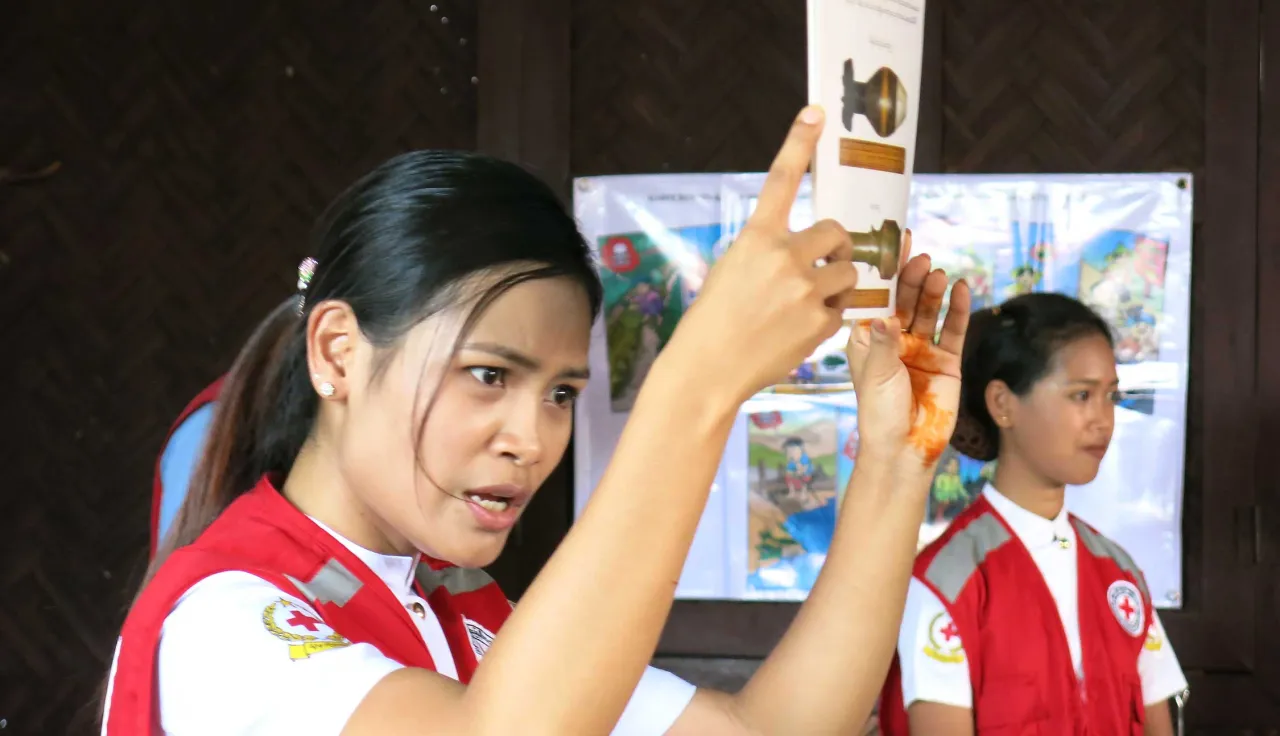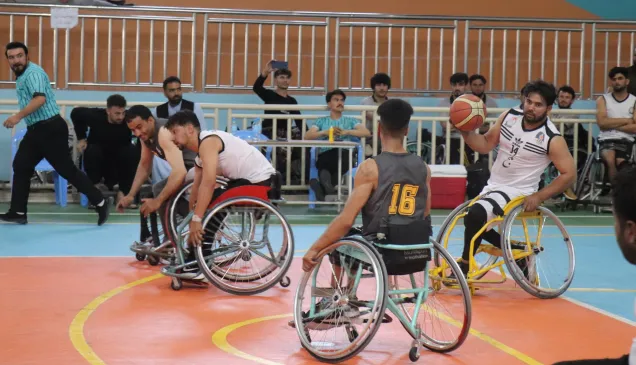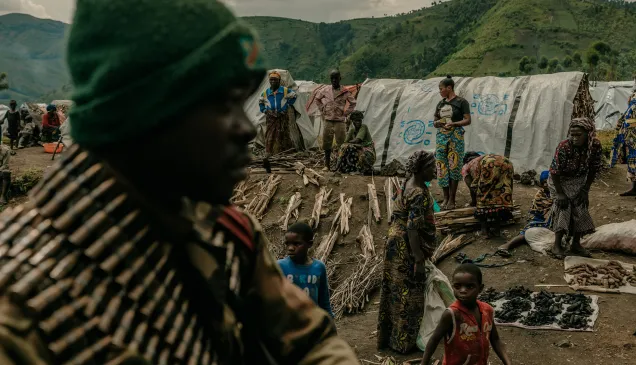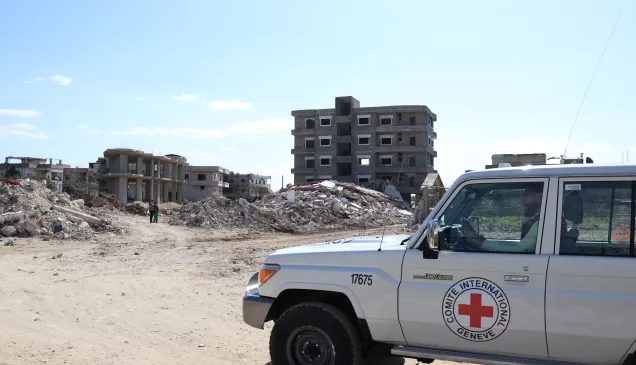For Myanmar’s displaced, landmines stand in the way of returning home

Decades of ongoing conflict have left Myanmar heavily contaminated by landmines and unexploded ordnance (UXO).
Many people live in fear of the cluster munition remnants. For over two years, in order to reduce the impact of weapon contamination on local communities, the Myanmar Red Cross Society (MRCS) and ICRC have been educating community members displaced by the conflict in Kachin.
“If you see a mine, stop,” warned Su Myat Thandar. “Do not touch it. Mark it clearly, or leave a cloth nearby. And go back the same way that you came.”
The 26-year-old from Kachin is a former mathematician who recently joined the MRCS. Su Myat Thandar now works in camps that host communities displaced by the conflict. She educates people about the risks posed by the landmines and UXO.
“Many people in Myanmar do not know about the danger of mines,” she said. “And the injuries they cause can change their lives forever. It is very hard for some to accept.”
Located in northern Myanmar, Kachin State has suffered from armed conflict for years. Soon after the hostilities resumed in 2011, thousands of people left their villages to take refuge in camps. Today, over 100,000 people remain displaced in Kachin and northern Shan.
“We are concerned about the humanitarian impact of landmines, as well as unexploded bombs and shells on local communities,” said Srdjan Jovanovic, an ICRC expert in weapon contamination. “Weapon contamination restricts movements in rural areas, limits access to grazing land and water, and the feasibility of development projects.”

Su Myat Thandar warns people about the presence of landmines in Kachin. CC BY-NC-ND / ICRC / C. Brassard-Boudreau
At camp Mali Yang in Myitkyina, in Kachin State, a hundred people gathered under the shade of a roof made out of bamboo and tin. They listened with rapt attention to Su Myat Thandar as she shared photos of weapons that people could come across in Kachin. For them, the risks posed by landmines are huge.
“It’s one of the main reasons why people are afraid of going back to their villages,” said Sabrina Denuncq, Head of the ICRC in Kachin.
Su Myat Thandar displayed a graphic image of someone injured. “Look at what would happen to you if you are hit by a mine,” she said. “Children, if you see a mine, inform your parents quickly.”

Different tools are used to warn people about the risks posed by landmines. CC BY-NC-ND / ICRC / C. Brassard-Boudreau
Since 2015, the ICRC has trained almost 200 Red Cross volunteers on mine-risk education. These, in turn, sensitized over 2,200 people in Kachin, Shan, Kayin, Eastern Bago and Tanintharyi states in Myanmar.
“The ICRC helps communities prevent the risks they face from landmines and unexploded ordnance,” said Juerg Montani, Head of the ICRC in Myanmar. “We also focus on helping those affected through our rehabilitation services.”
They have been providing prosthetic services at the Myanmar Red Cross Hpa-an Orthpaedic Rehabilitation Centre for over a decade. At present, the network of ICRC-supported physical rehabilitation centres is expanding to Kachin and east Shan states, enhanced by MRCS mobile prosthetic repair clinics.
“These services provide prostheses and orthoses to people who have lost limbs, and enable them to regain mobility, independence and dignity and overcome some of the obstacles that people with disabilities face,” Montani said. “The ICRC aims to bring sustainable solutions so we can contribute to the stabilization of Myanmar. We will also open dialogue with parties to the conflict, so they are aware of the humanitarian consequences of such a risk posed to civilians.”
Su Myat Thandar concluded her session satisfied that the group she spoke to were now more aware of the risks posed by landmines. “We often hear in the news that people have stepped on mines,” she said. “I hope our work can make a difference, and they are now less fearful to return home.”



